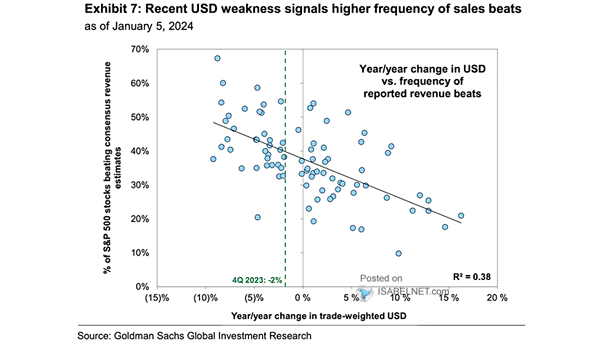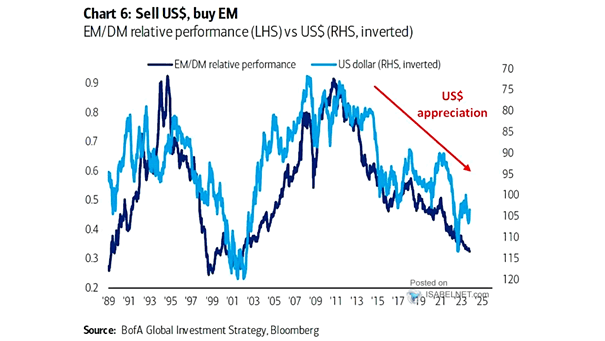U.S. Dollar Strength vs. Frequency of Reported Revenue Beats
U.S. Dollar Strength vs. Frequency of Reported Revenue Beats A weaker U.S. dollar is correlated with more revenue beats, reflecting the potential benefits of currency depreciation on corporate financial outcomes. Image: Goldman Sachs Global Investment Research


